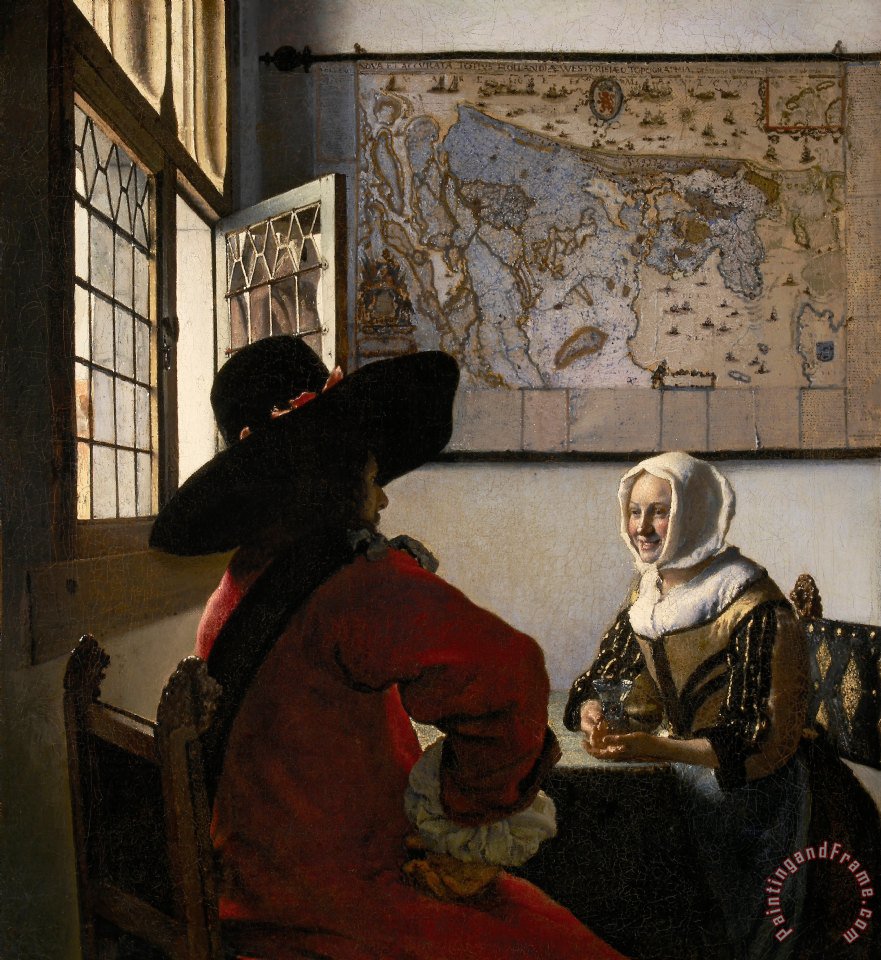Did Vermeer Trace His Golden Age Masterpieces? An Artist Puts the Theory to the Test
If Johannes Vermeer used a camera obscura, a new book may have figured out how he did it.
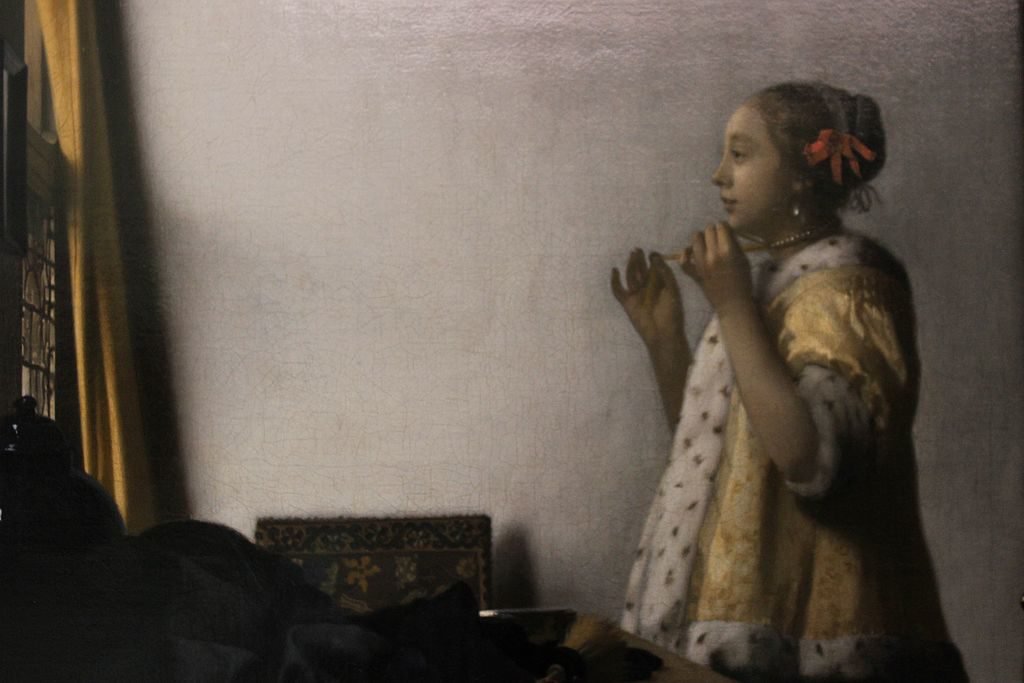 Detail from Jan Vermeer’s Young Woman With A Pearl Necklace, (1662-1665). Courtesy of Wikimedia Commons.
Detail from Jan Vermeer’s Young Woman With A Pearl Necklace, (1662-1665). Courtesy of Wikimedia Commons.
Leaving behind just 36 exquisite, immaculately lit paintings, Dutch artist Johannes Vermeer has captivated art lovers for generations. Now, author Jane Jelley may have uncovered the artist’s secrets. In her new book, Traces of Vermeer, Jelley tests long-held suspicions that Vermeer actually traced his compositions using a camera obscura—by demonstrating just how such a technique could have been executed.
For over a century, art historians have wondered if Vermeer could have been working with the aid of a camera obscura, a pinhole device that uses a lens to project an inverted view of a subject into a darkened space. And if so, how did the artist convert an upside-down light projection into a fixed painting?
Precious little is known about the Dutch Golden Age master, aside from his birthplace in Delft. So there is no historical evidence supporting such theories. All we have are the paintings and what can be inferred from their appearance.
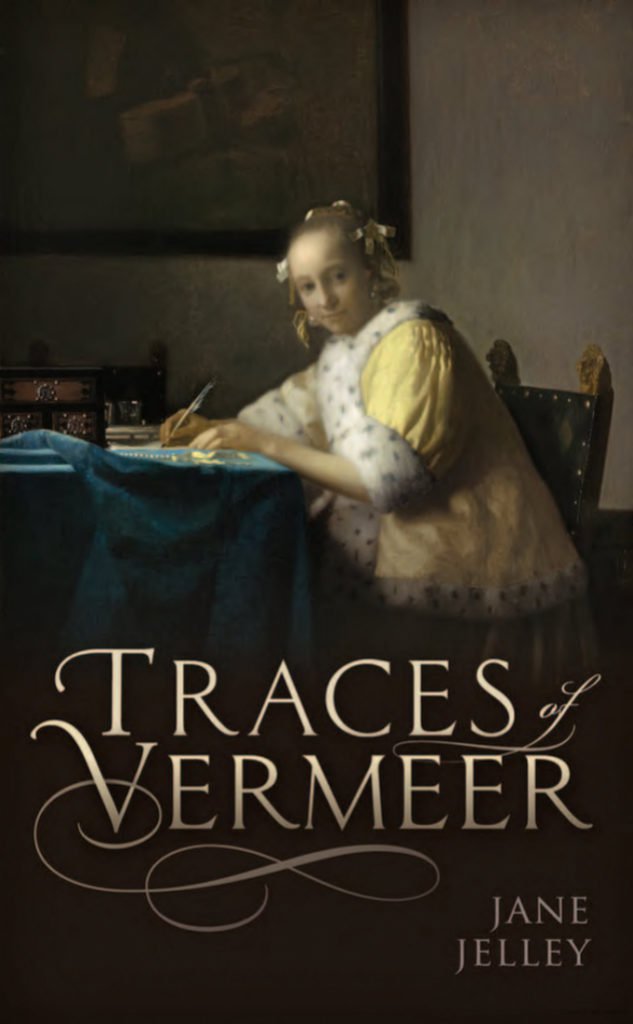
Jane Jelley, Traces of Vermeer (2017), cover. Courtesy of Oxford University Press.
Jelley, a painter, has approached the mystery from the point of view of an artist, doing her best to replicate Vermeer’s work from the canvas up, based on X-ray observations.
Beneath the surface, there aren’t underdrawings on Vermeer’s canvases, and there are no signs that he made corrections to his layouts as he worked. Instead, he created a shadowy image outlining the scene before painting. These unusual underpaintings served as a foundation for his luminous works.
Using a camera obscura, Jelley attempted to come up with the same underlayer through a rudimentary monoprint process. She projected images of various Vermeer works through the lens, then traced each image in dark paint on a sheet of transparent oiled paper. She then pressed the painted paper—essentially an image negative—down on canvas, producing a rough outline of each scene. The results appear remarkably similar to the underpaintings of the Vermeer works.
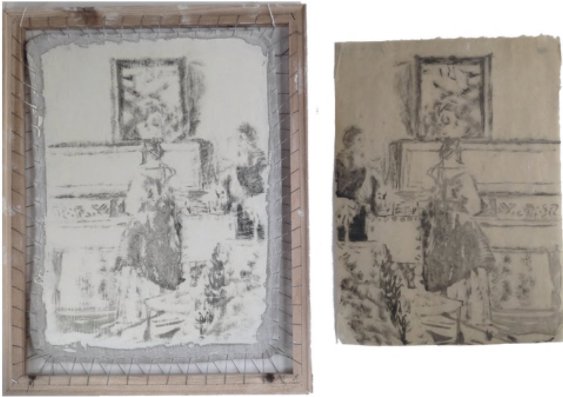
Jane Jelley devised a means of making prints from a tracing made using a camera obscura, as part of the research for her new book Traces of Vermeer (2017). Courtesy of Oxford University Press.
In reimagining Vermeer’s process, Jelley made certain to use a method the artist could have employed in his era. “The materials used in the studio experiments were all available in Vermeer’s time. Great care was taken to prepare the surface of the canvas in a way he would have recognized; and pigments were ground by hand into cold pressed linseed oil,” Jelley wrote on her website, describing the process. “This experiment took a year to complete not only because grounds had to be dry and prepared ready to receive a print, but also because it took time to refine a successful technique.”
If Vermeer really did use this method, it would go a long way to explaining his distorted proportions and off-center compositions. It’s also easy not to have to adjust your perspective when you’ve traced it all in one fell swoop.
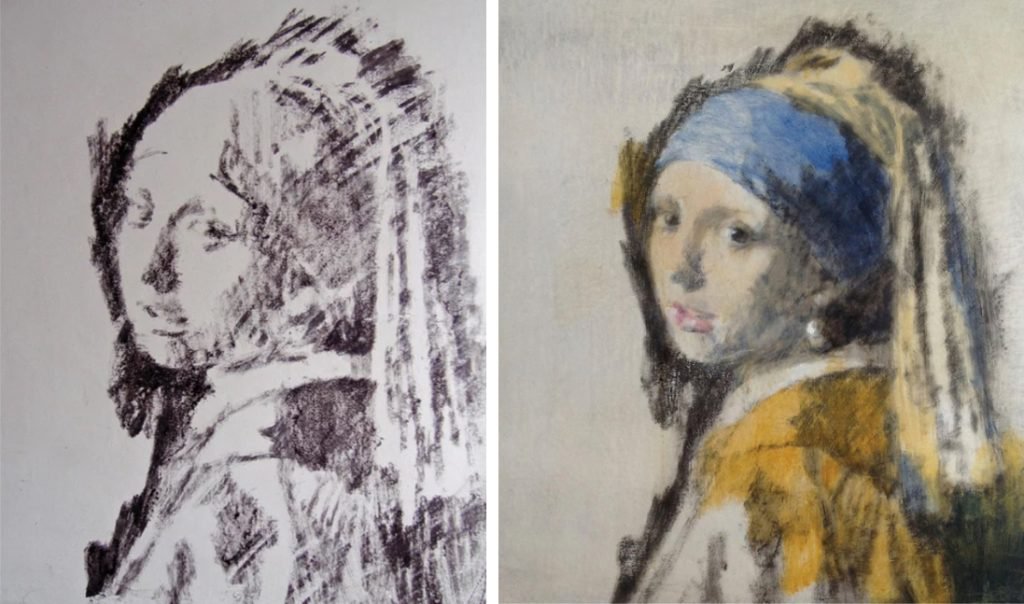
L: Jane Jelley made this print based on Johannes Vermeer’s Girl With a Pearl Earring using a camera obscura, as part of the research for her new book Traces of Vermeer (2017). R: Jelley added color to the print, based on Vermeer’s original. Images courtesy of Oxford University Press.
The first person to raise the possibility that Vermeer used a camera obscura was American artist Joseph Pennell, who in 1891 noticed that the man in the foreground of Officer and Laughing Girl was shown nearly twice as large as the girl he sat facing, in much the same way that such a scene might appear in a photograph.
In 2002, Philip Steadman further explored this theory in Vermeer’s Camera: Uncovering the Truth Behind the Masterpieces. (It was a lecture by Steadman in 2007 that inspired Jelley to begin the research that led to Traces of Vermeer.)
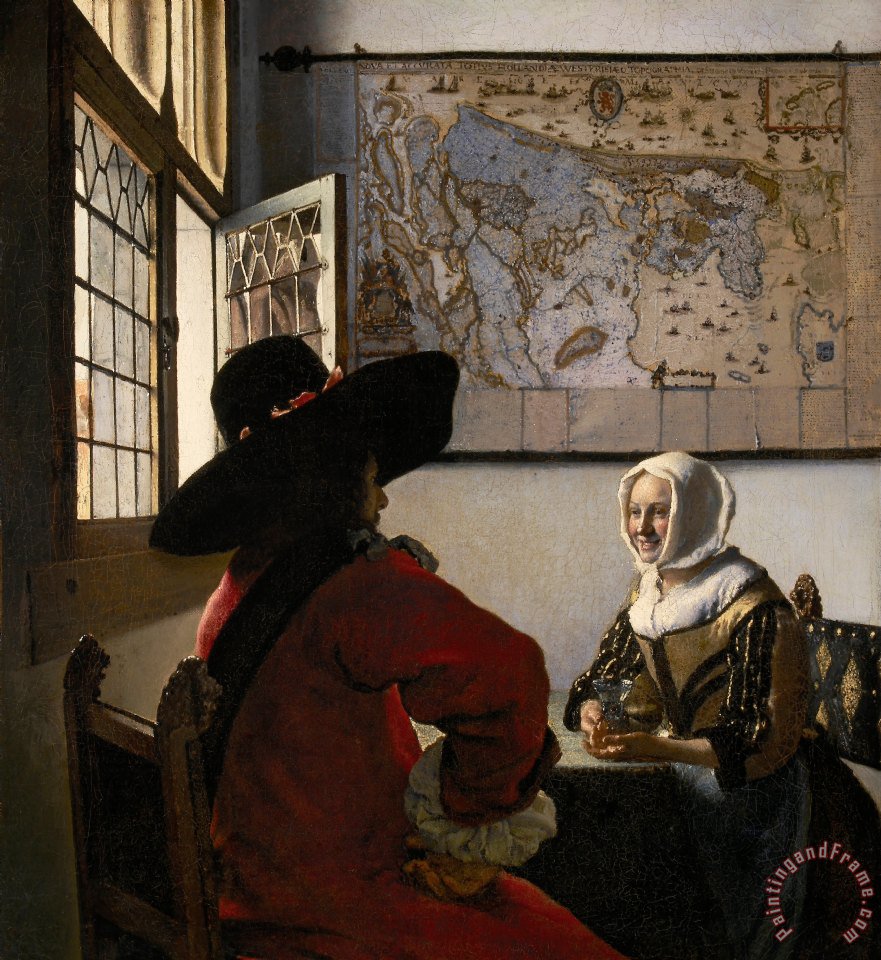
Johannes Vermeer,
Officer and Laughing Girl (c. 1655–60). Courtesy of the Frick Collection, New York.
Artist David Hockney also famously made his case on the matter, with help with from physicist Charles Falco, in their 2001 book Secret Knowledge: Rediscovering the Lost Techniques of the Old Masters. To further his point, Hockney made a number of portraits using the techniques he claimed were employed by the likes of Vermeer.
In her book, Jelley is quick to allay fears that Vermeer’s use of the camera obscura diminishes his genius. Rather, she says, it is an impressive innovation. “The image from the camera obscura is merely a projection. To capture and transfer this to canvas requires skill, judgment, and time; and its product can only ever be part of the process of making a painting,” she writes. “We can never know if Vermeer worked this way; but we should remember that this is not a mindless process, and not a shortcut to success.”
Source : Did Vermeer Trace His Golden Age Masterpieces? An Artist Puts the Theory to the Test | artnet News

